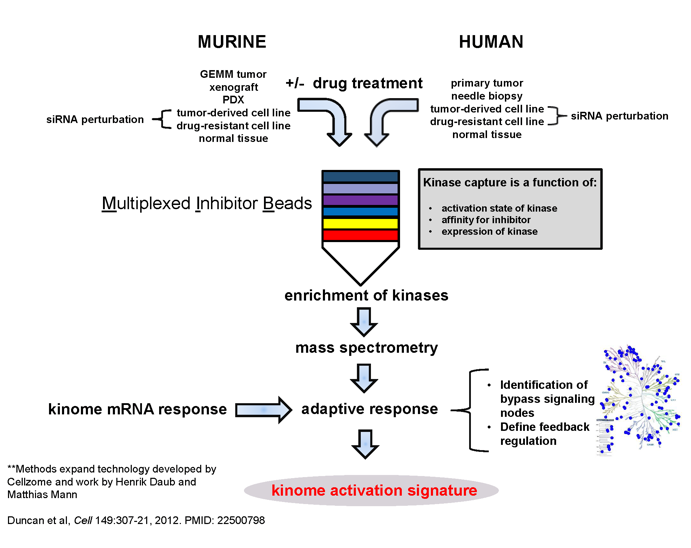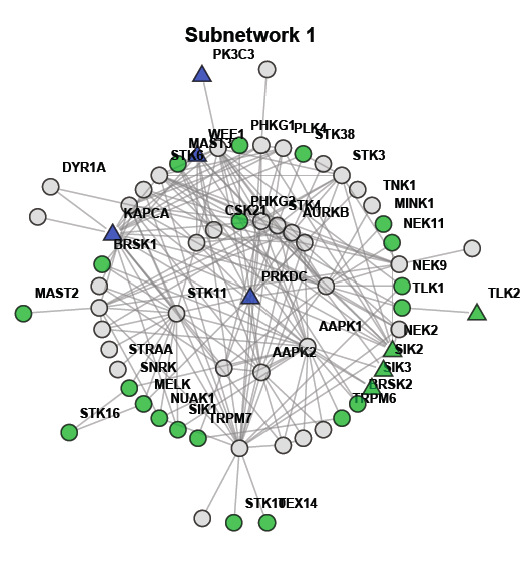
Technology: Multiplexed Inhibitor Beads (MIB) coupled with mass spectrometry (MS)
-
Gary L. Johnson, Ph.D.
Kenan Distinguished Professor and Chair
Department of Pharmacology - Shawn Gomez, Ph.D.
Associate Professor Department of Biomedical Engineering
Adjunct Assistant Professor
Department of Computer Science
Overview:
Even with the new databases of genomic information for different diseases, it is often still unclear how molecular taxonomies translate to phenotype. Additional methods characterizing proteomic taxonomies are needed to understand signaling networks, particularly of protein kinases because of their druggability, which define the properties of disease-based subtypes. Important in the analysis of the kinome is a characterization of understudied kinases, where approximately half of the kinases in the kinome are poorly characterized and have been referred to as members of the “kinome dark matter”. Understudied kinases need to be functionally integrated into kinase networks for a global understanding of kinome dynamics both at baseline and with perturbation.
To this end, we have developed methods using multiplexed inhibitor beads (MIBs) coupled with mass spectrometry (MIB/MS) that has the ability to bind and identify a large percentage of kinases in the human kinome. By RNAseq most cell lines express 350 or so kinases and our MIB binding profiling captures a significant percentage of the expressed kinome. In one study we compiled the baseline kinase MIB binding profile using MIB/MS for 17 cell lines across breast cancer subtypes in addition to patient tumors, patient-derived xenografts and genetically engineered mouse models of breast cancer. Using feature selection, Principal Component Analysis (PCA), and Support Vector Machine (SVM) it was possible to subtype breast cancers based on the MIB/MS profile of only 50 kinases among the kinases captured by MIB/MS. We have referred to this kinase profile as the MIB Signature (MIBS 50), which is largely independent of expression level of the kinases measured by RNAseq and includes protein, lipid and metabolic kinases. MIBS 50 represents 50 kinases with principal component analysis weights in the highest 10% of kinases in baseline MIB/MS profiles for luminal, HER2+, basal-like and claudin-low breast cancers. Kinases identified within these signatures are distributed throughout the kinome, representing multiple subnetworks with several kinases of the MIBS 50 representing understudied kinases of the kinome dark matter. The findings demonstrate that baseline kinome MIB binding profiles have prognostic value for defining kinome taxonomies for proteomic subtyping of diseases and in defining the integration of kinase signaling networks that is not currently possible using genomic strategies
Flowchart of MIB/MS technology:

System biology analysis of kinase activation subnetwork:


